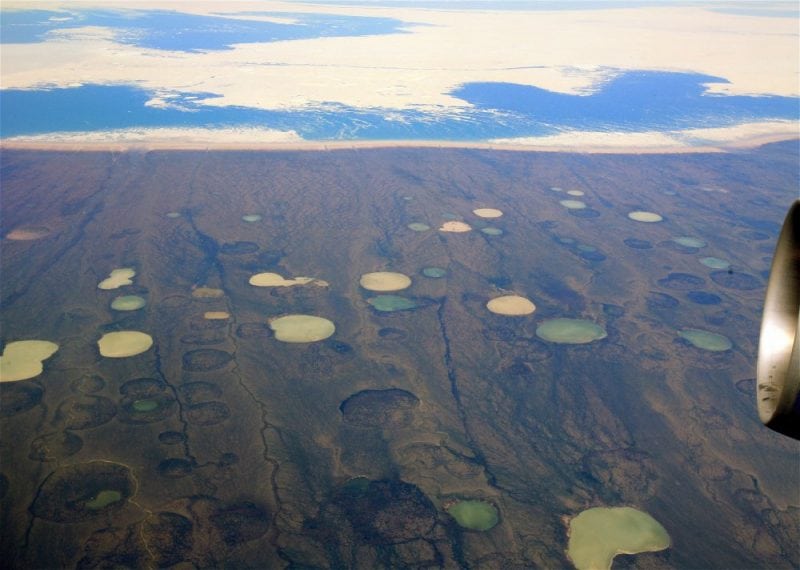
The world has changed drastically from the beginning of the industrial revolution to now. We have advanced at an accelerating pace and developed many different technologies, each revolutionizing our way of life. The automobile ushered in an age of transportation development. The internet created an unprecedented level of connection between the people of the world, leading to a level of globalization never seen before.
As with many things, these advances have come with a price. We have altered the world we live it, changing landscapes and rebuilding the world to fit our needs. This has affected countless ecosystems and even more species. Among the dangers that we have produced is climate change.
The influx of greenhouse gases into the atmosphere has caused the world to become increasingly warmer than anytime before in our history. With things like the Paris Agreement, which aims to unite the world towards stopping or, at the very least, slowing down climate change. The United States, while not part of the Paris Agreement, is seeing many states committing their resources towards this endeavor.
Despite the progress, there are issues we continue to face. There are many powerful companies and individuals that resist the idea of climate change and its consequences.
As climate change continues to alter the world, it has led to a potentially critical moment as it begins to affect permafrost, which holds the potential to accelerate the dangers of climate change.
What Is Permafrost
Permafrost is basically frozen dirt, soil, and sediment that have been frozen for two or more years. There are some permafrost that contains no water, and no ice, so they are called dry permafrost. Most permafrost contains ice to some degree. Most permafrost also has an active layer, which is usually the surface layer, that experiences thawing and freezing as the surrounding temperature changes with the seasons.
Permafrost can generally be grouped two ways: continuous and discontinuous. Continuous permafrost is simply permafrost that exists in an uninterrupted connection with other permafrost. These are typically founder where the temperature rarely rises above freezing. Discontinuous permafrost is permafrost that exists in patches and is fragmented as we move from colder to warmer environments.
As can be imagined, permafrost is widely distributed in the northern part of the world, in areas like the Arctic, Alaska, and Serbia. Permafrost can be found beneath 85% of Alaska and most of it has been frozen for over 10,000 years. Permafrost can be found in more southern areas, especially in areas of high elevations (think mountains) as the temperature decreases in those regions enough for permafrost formation.
Most of the permafrost are very old and contain a myriad of secrets that continually draws in researchers. Because they remain frozen for such long periods of time, scientists can extract cores of permafrost and learn about what lived and lives in the soil. Dr. Richard Hoover of NASA had taken samples of permafrost in 2000 and found bacteria that came back to life after being frozen for 30,000 years in the permafrost.
The Permafrost Tunnel Research Facility in Alaska was dug in the 1960s with the goal of understanding what was hiding inside of Alaska’s extensive permafrost. Along with bacteria, researchers have found preserved bodies of mammoths, ancient flora, and many organisms. This research facility has served many purposes for scientists and now it will help us to see and understand climate change as it slowly becomes affected by the rising temperatures in the region.
Alaska’s Melting Permafrost
Recently, the National Oceanic and Atmospheric Administration (NOAA) reported that 2016 saw permafrost temperatures at the highest recorded temperatures in most regions of the Arctic. They also noted that increase in permafrost temperature has been greatest in Alaska, Canada, and Svalbard. This means that these regions are at risk of experiencing melting permafrost.
As noted by Dr. Thomas Douglas, a geochemist at the U.S. Army Corps of Engineers, the permafrost in Alaska contains many organic materials, like animals and plants, that have been kept frozen for thousands of years. We have used these materials to understand the past, but as the permafrost melts, they are becoming a catalyst for something worse.
According to National Public Radio, since there are also many ancient bacteria within permafrost, the melting wakes them up and they are very hungry. To satiate that hunger, they feed on the organic materials that are all made of carbon. Dr. Douglas estimates that there is over 1,600 billion metric tons of carbon stored within the entire Arctic permafrost, which is more than the carbon that exists in the atmosphere currently.
This amount of carbon is a major problem because of the bacteria. Dr. Douglas and his team took samples of permafrost with organic matter and observed as they melted. They found that the ancient bacteria consumed the organic materials and produced carbon dioxide and methane, gases that are major contributors to climate change.
This small experiment shows the tip of the iceberg that may happen if the permafrost around the world melts. Billions of metric tons of greenhouse gases will be released into the atmosphere and, along with the greenhouse gases already there and those being released by humans, will greatly accelerate the effects of climate change.
There are already signs of this happening in Alaska. At the moment, researchers cannot tell how much of this trapped carbon will be released or when it will happen. Things such as soil erosion can slow it down by trapping them below the ocean. For the moment, more research will need to be done in the Arctic regions to understand the extent of the melting and the rate of any gases being released to create a more accurate future of the Arctic.
As we become more aware of climate change and its effect on us, hopefully, the steps we have begun to take will help to prevent these gases from entering the atmosphere and protect the Arctic regions from further breakdown.









